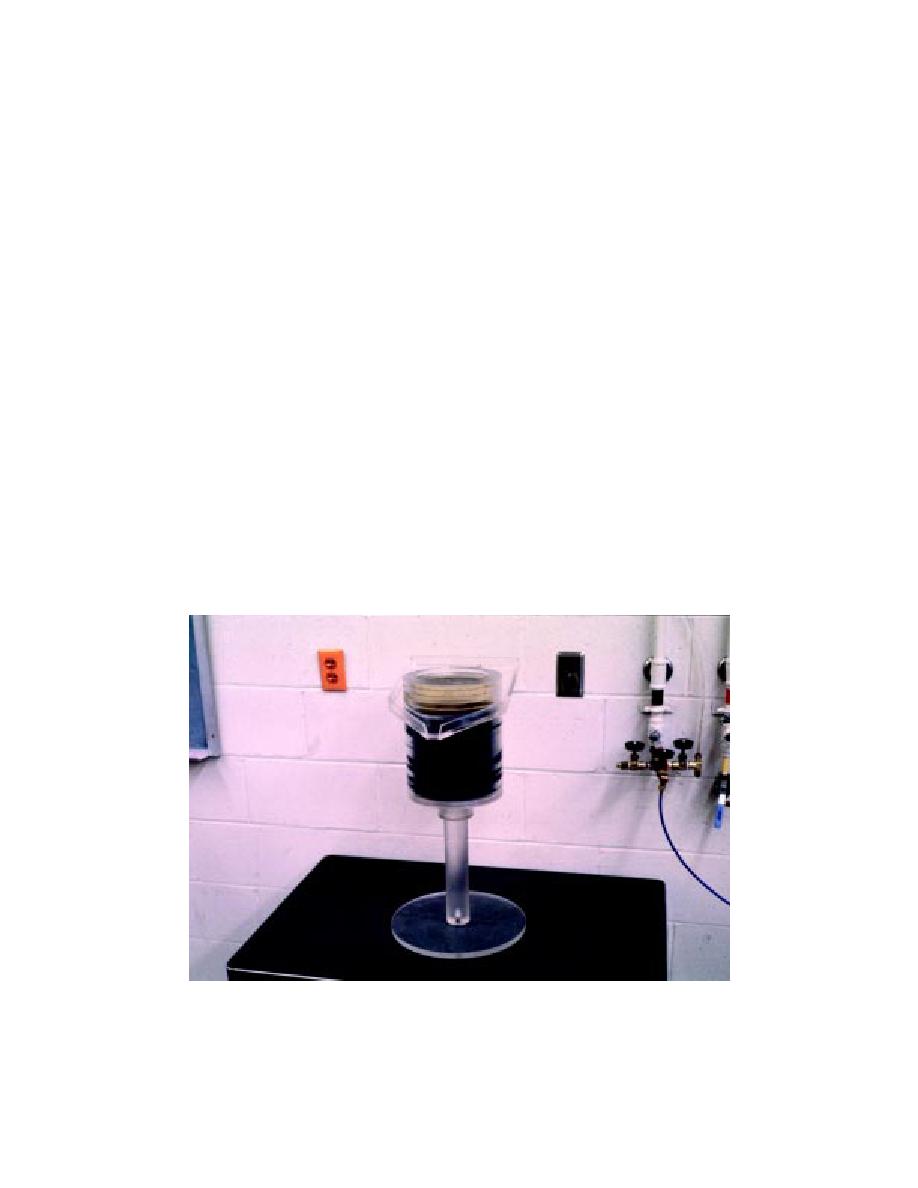 |
||
|
|
||
|
Page Title:
Figure 12. Self-weight consolidation test device |
||
| |||||||||||||||
|
|
 This test is useful for determining the upper portion of the void ratio-effective
stress and void ratio-permeability relationships; it is presently the only method
available to determine this needed information.
The self-weight testing device is shown in Figure I2. This device consists of
an outer plexiglass cylinder that encircles a second plexiglass column composed
of either 0.25- or 0.50-in.-thick rings. The device allows consolidation testing
and subsequent incremental sampling of a specimen 6 in. in diameter and up to
12 in. high. The material tested in this device should consist of only the fine-
grained portion of the sediment, i.e., that portion passing the No. 40 sieve. Use
of only minus No. 40 material is necessary to prevent, or minimize, segregation
of the coarser fraction from the high void ratio slurry being tested.
The sediment is mixed with water from the dredging site to form a slurry. In
order to develop the entire e-)1 relationship, this slurry should always be at a
void ratio greater than the void ratio at zero effective stress, eoo, which is the void
ratio of the dredged material after sedimentation and before consolidation. The
initial void ratios usually used in this test range from approximately 10.0 to 16.0.
The slurry is placed in the consolidometer, and it is allowed to undergo self-
weight consolidation. Deformation versus time data are collected during the
consolidation process. After the completion of primary consolidation, the test
device is disassembled and the specimen is sampled at 0.25- or 0.50-in. intervals
throughout its depth to obtain the necessary data to calculate void ratio, effective
stress, and permeability values for the upper portion of the e-)1 and e-k curves.
Figure I2.
Self-weight consolidation test device
I4
Appendix I Consolidation Testing
|
|
Privacy Statement - Press Release - Copyright Information. - Contact Us - Support Integrated Publishing |